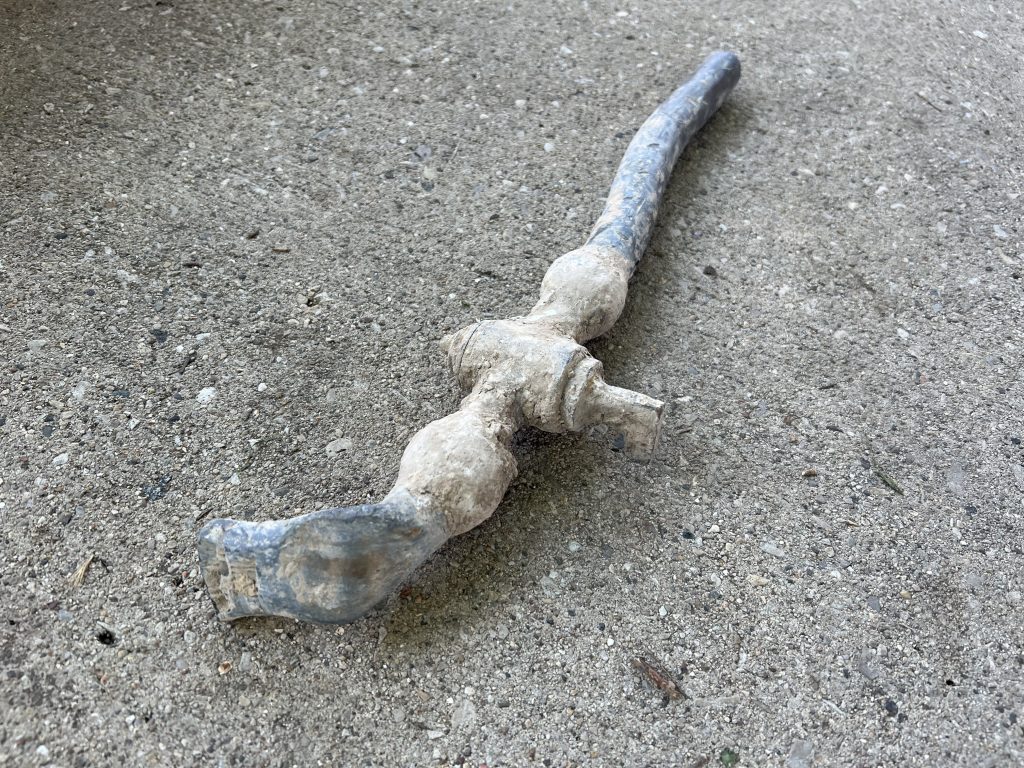Milwaukee Faces Complicated Question On What Lead Pipes To Replace Next
Milwaukee Water Works hopes to grow replacements by almost 50% in 2024.
For the past half-decade, Milwaukee Water Works‘ (MWW) efforts to replace the approximately 66,600 remaining lead service lines that connect buildings to the city’s water system have long followed a straightforward process.
If it’s a childcare center, it gets replaced. If it breaks, it gets replaced. If the road in front of the property is reconstructed or a water main is replaced, it gets replaced.
On an annual basis, those three buckets effectively exhaust the city-owned utility’s available resources and provide enough work for MWW to work to meet its annual replacement goal (1,200 in 2023). But with an influx of funding from the Bipartisan Infrastructure Law (BIL), the city now has an unusual question on its hands. When you’ve exhausted all of the service lines (laterals) that need to be replaced, which one do you want to replace next?.
“We are working diligently on a plan to expand the replacement program,” said Superintendent Patrick Pauly to the Public Works Committee on Feb. 15. “The [BIL] has presented a first-ever opportunity for funding provided specifically for lead service line replacement and we need to take advantage of that funding to the greatest extent possible.”
MWW hopes to replace 1,700 laterals in 2024, a 500 lateral increase, and 2,200 in 2025
The utility is preparing an equity-focused prioritization program that melds a UW-Madison socioeconomic dataset, the Area Deprivation Index (ADI), with local lead poisoning data and the density of lead service lines.
“What a horrible-sounding name,” said Alderman Robert Bauman of the university’s program. He said publicly using it could chase away investment from neighborhoods. “The area of what?” asked Ald. Russell W. Stamper, II.
The ADI, measured at the census-block level, includes income, education, employment and housing quality. Pauly said he learned of it last June, when the Washington D.C. water utility presented at a conference how it was using the index
“We already have an excellent map,” said Stamper, referencing the Milwaukee Health Department‘s map of lead poisoning, regardless of source.
“In order to do this in a thoughtful, equitable manner, we needed to bring in other factors to prioritize,” said Pauly.
The utility, which will soon begin briefing council members on the “early stage” draft proposal, hopes to publicly unveil an approved plan in September. “There will be some community outreach on this before coming to agreement on a plan,” said the superintendent.
Alderwoman JoCasta Zamarripa raised the specter that the city could soon be subsidizing improving properties for out-of-state landlords. She asked if it could be targeted only at owner-occupants. Property owners currently pay only a small share of the cost of a required replacement.
“That’s a really good question,” said Pauly. He said it’s being discussed. “We, the utility, have a difficult time administering the current program with all the complications. I don’t know what data we would use to confirm owner occupancy.” Bauman floated using a different program to further subsidize low-income homeowners. The city offers a Compliance Loan Program that provides no-interest loans to low-income homeowners to fix code violations with payback due only when the property is sold.
Pauly did have more news for the committee. Through the BIL, the Environmental Protection Agency (EPA) initially expected to provide Wisconsin with $50 million per year for five years. Pauly said given that some states are receiving more money than they need to replace their lead water infrastructure, the EPA advised him Wisconsin would receive more money and would likely receive it for a longer period of time. He said contractors have told him that if a dedicated stream of work is available they could scale up to meet demand, potentially alleviating another barrier to getting the work done.
Vice President Kamala Harris and infrastructure czar Mitch Landrieu visited Milwaukee in 2022 to tout aspects of the $1.2 trillion infrastructure law. Mayor Cavalier Johnson spoke on a panel at the White House Summit on Accelerating Lead Pipe Replacement in January. As a result of the BIL’s passage, Department of Public Works and MWW leader Karen Dettmer left her city job to take a position with the EPA working on water infrastructure.
Cost To Homeowners Dropping
Inflation might have increased the cost of many things, but supply chain issues will cause a cost reduction for those getting their lateral replaced. For the second year in a row, MWW will cut the cost to residential property owners to have a lateral replaced when it breaks or is subject to a planned replacement.
The cost will have fallen from $1,843 in 2021, to $1,724 in 2022 and $1,592 in 2023.
“This is good news,” said Pauly. “There were a lot of growing pains with starting the program in 2017… As we have dialed in the process of bidding and contracting, our costs have stabilized considerably.”
By city ordinance, the property owner pays the lesser of either one-third of the average cost of replacing the private side of the lateral or $1,600, adjusted annually for inflation against the constant-quality price index for single-family home construction. The latter figure has grown to $2,488 since its 2017 inception.
Pauly said the cost of a total lateral replacement, which includes the private and publicly owned portion, has fallen from around $11,000 to $9,400. Dettmer, prior to joining the EPA, said part of what was driving the average cost down was expanding the number of planned replacements done in conjunction with road reconstruction or water main replacement projects. The city can find economies of scale by replacing multiple laterals on the same block. Pauly said a special 2022 factor was that the city couldn’t get enough water main materials in, so the water contractors were more likely to submit lower bids to do service line replacements when the other work wasn’t as available.
Council members, upon learning of the potential increase in EPA funding, said they would work with the budget office to explore further reducing the cost to property owners.
The city has offered the subsidy and mandated the complete replacement of lead service lines in a break since 2017. Those that must pay to have a lateral replaced can spread the cost out over 10 years on their property tax bill. Currently, property owners cannot take advantage of the subsidy if they are voluntarily having their lateral replaced, but the city does cover the cost of replacing the publicly-owned portion.
The city-owned utility, which sells water to 16 municipalities, is limited on where it can derive funding from to replace laterals due to state utility regulations. It cannot use funds from customers to replace laterals at its own discretion. Further complicating the matter, because the service line is partially privately owned, the city cannot force replacement in many cases.
Any house built before 1978, which accounts for most of the houses in the city, is likely to include lead paint. The last lead service line in the city was believed to be installed in 1962. City officials have repeatedly insisted that lead paint is the biggest danger, but that no amount of lead is safe for people. Interior plumbing, beyond the service line, is also likely to include lead. Individuals concerned about lead poisoning can learn more about lead-safe filters and testing on the MWW website. MWW also maintains a database of properties with known lead service lines.
MWW replaced 991 service lines in 2022, 558 because of a leak or failure, 77 at a childcare facility or school, 152 because of water main replacements, 174 because of other infrastructure projects, and 30 that were owner-initiated. Pauly, in 2022, warned that the utility would not meet its goal of 1,100 replacements because of shortages of curb stops and corporation stops that connect the service lines. It has since acquired sufficient stops to meet its 2023 goal.
Legislation Link - Urban Milwaukee members see direct links to legislation mentioned in this article. Join today
If you think stories like this are important, become a member of Urban Milwaukee and help support real, independent journalism. Plus you get some cool added benefits.
Related Legislation: File 221564
More about the Lead Crisis
- Gov. Evers Approves Bill to Support Lead Service Line Replacement in Superior - Gov. Tony Evers - Jul 1st, 2025
- MPS’s Westside Academy Cleared of Lead Risks After Stabilization Work - Milwaukee Public Schools - Jul 1st, 2025
- MPS Plans Lead Remediation at 40 Schools This Summer - Evan Casey - Jun 27th, 2025
- Baldwin, Reed Demand Written Answers from RFK, Jr. on Firings of Childhood Lead Poisoning Experts at CDC - U.S. Sen. Tammy Baldwin - Jun 11th, 2025
- MPS’s LaFollette School Cleared of Lead Risks After Stabilization Work - Milwaukee Public Schools - Jun 11th, 2025
- Sen. Baldwin Hears From Parents About MPS Lead Crisis, Chides RFK Jr. - Evan Casey - Jun 9th, 2025
- Reps. Margaret Arney and Darrin Madison Urge Joint Finance Committee to Reinstate Essential Lead Abatement Funding - State Rep. Margaret Arney - Jun 5th, 2025
- Gov. Evers, DHS Continue Administration’s Efforts to Combat Lead Poisoning Statewide with Permanent Rule - Gov. Tony Evers - May 27th, 2025
- RFK Jr. Claims ‘Team’ Is In Milwaukee Helping With Lead Crisis, Health Department Can’t Find Them - Nick Rommel - May 22nd, 2025
- MPS Announces Starms Early Childhood Center Is Cleared of Lead Dangers - Milwaukee Public Schools - May 21st, 2025
Read more about Lead Crisis here
Political Contributions Tracker
Displaying political contributions between people mentioned in this story. Learn more.
- February 20, 2016 - Cavalier Johnson received $250 from Robert Bauman
























